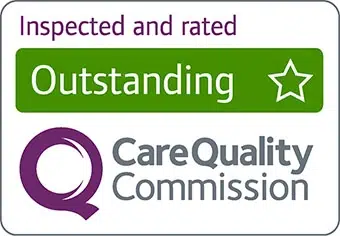What Is Selective Mutism?
Selective mutism is a unique and challenging anxiety disorder that primarily affects children. Children with selective mutism find it difficult or impossible to speak in specific social situations, even though they might talk generally in other settings like their homes. Signs of selective mutism can vary, but typical indicators include a child being silent or extremely shy in school, around strangers, or in public places. This silence isn’t because they’re rude or uninterested; it’s because their anxiety takes over, making it hard to express themselves verbally, which leads to language difficulties.
The root cause of selective mutism is often linked to social anxiety disorder, where children experience intense fear and discomfort in social situations. It’s essential to understand that children with selective mutism aren’t choosing to stay quiet; their anxiety holds them back. Sometimes, selective mutism can coexist with other anxiety disorders like obsessive-compulsive disorder, making it even more challenging for them to speak up. Early intervention and understanding from parents, teachers, and peers can make a significant difference. By creating a supportive environment and encouraging children with selective mutism to express themselves in ways they feel comfortable, we can help them overcome the barriers caused by selective mutism.
Causes and Contributing Factors
Recent research suggests that family history can play a role, indicating that children with relatives who have anxiety disorders or mood disorders might be more susceptible to developing selective mutism. It is also related to extreme social anxiety, which affects how children interact with others, especially outside their comfort zone. Some kids with selective mutism might also struggle with language difficulties and nonverbal communication, making it even harder for them to express themselves. Additionally, it tends to emerge at an early age, often around primary school, and if left untreated, it can persist into older childhood and adolescence.

The presence of other children can contribute significantly to a child’s anxiety levels, especially if they feel pressured to speak or fear being judged. Sometimes, children may have experienced a traumatic event or high levels of stress, further heightening the difficulty. Early intervention by visiting a mental health professional is crucial in helping children with selective mutism cope with anxiety and develop the necessary skills to overcome it.
Psychological and Behavioural Factors
Behavioural therapy plays a pivotal role in helping children with selective mutism overcome challenges and build confidence. In therapy, children learn various coping strategies to manage anxiety, such as deep breathing exercises and relaxation techniques. Therapists create a supportive and safe environment, allowing children to face challenges and practice speaking in different situations gradually. Through positive reinforcement and encouragement, children gain a sense of accomplishment every time they successfully express themselves, boosting their self-esteem and reshaping their perception of social interactions.
Moreover, behavioural therapy provides children with a safe space to explore their emotions, enabling them to understand the root causes of anxiety. Therapists work closely with children to identify triggers and develop personalised strategies to handle difficult situations. As they progress, children often experience a shift in their psychology, creating a more positive outlook on social interactions. Many children learn that making mistakes is a natural part of social communication, and with time and practice, their confidence grows. This newfound confidence not only helps them overcome selective mutism but also positively impacts their overall psychological well-being, paving the way for healthier social relationships and improved emotional resilience. Through the power of behavioral therapy, children with selective mutism can embark on a journey of self-discovery, ultimately leading to a brighter and more confident future.
Environmental and Developmental Factors
Various environmental and developmental factors can influence selective mutism. In simple terms, these factors are the pieces that help us understand why someone might find it challenging to speak in specific settings. Environmental factors refer to the surroundings and experiences a child is exposed to. For instance, a child might face-selective mutism if they have been in environments where they felt extremely anxious or pressured to talk, leading them to withdraw and stay silent. Imagine being in a big group where everyone expects you to speak, and it makes you so nervous that you find it hard to say anything – that’s how challenging it can be for someone with selective mutism due to their environment.
Developmental factors, on the other hand, involve how a person grows and learns over time. Children with a slower pace of speech and language development might find it difficult to express themselves verbally, contributing to selective mutism. Similarly, some kids might be naturally more shy or introverted, making it harder for them to initiate conversations in specific situations. These factors can shape how a child interacts with the world around them, affecting their ability to speak freely in certain contexts.
Genetic Influences
Selective mutism can have genetic influences. This means it can run in families where parents or siblings might have faced similar challenges during childhood. Scientists believe that specific genes may play a role in making some individuals more prone to selective mutism. While genes can contribute to selective mutism, it’s important to remember that it’s just one piece of the puzzle. Environmental factors, social experiences, and support from family and friends also play a significant role in helping individuals with selective mutism overcome their challenges and find their voice.
Symptoms of Selective Mutism
As an anxiety disorder that affects the communication skills of both children and adults, there are some common signs and symptoms of selective mutism, including:
Consistently refrain from speaking in certain situations, even though they usually talk in familiar surroundings.
Limited speech, only using a few words or gestures in specific situations.
Avoiding eye contact when expected to speak.
Physical symptoms like trembling, sweating, or an increased heart rate when faced with situations that require speech.
Difficulties starting conversations or responding to others, especially in unfamiliar or formal settings.
Speaking freely and comfortably in environments where they feel secure and relaxed, such as at home or with close family members.
Relying on nonverbal communication methods, like nodding, pointing, or using facial expressions, to express themselves.
Noticeable in school or work settings, where the person struggles to participate in classroom discussions or meetings.
Impact on Communication and Social Interaction
Selective mutism can significantly impact communication and social interaction in children and adults. Individuals struggle to communicate with others in various settings, such as school, social gatherings, or even at home. This difficulty in speaking can lead to feelings of frustration, social isolation, and low self-esteem. As a result, it may take a lot of work to form connections with others, impacting their social communication and making it challenging to participate fully in everyday activities.
On the positive side, with understanding, patience, and the right support, individuals with selective mutism can learn to overcome these challenges. Imagine having a safe and supportive environment to build your confidence to speak gradually. Therapy, such as cognitive-behavioural therapy (CBT), can play a crucial role in helping individuals with selective mutism develop effective communication skills, focus on building trust, reducing anxiety, and gradually encouraging verbal expression. With the proper support and encouragement, individuals with selective mutism can learn to communicate more comfortably, improving their social interactions and overall quality of life.
Selective Mutism in Children and Adults
Selective mutism goes beyond shyness; it’s a complex social anxiety disorder that impacts one’s ability to engage verbally, causing feelings of frustration and isolation. Understanding selective mutism is crucial for creating supportive environments where individuals can thrive, learn, and communicate effectively.
Selective Mutism in Childhood
In an effective treatment plan, it is crucial to involve the child’s school. The first step often consists of educating teachers and administrators about selective mutism, a condition that many educators might need to familiarise themselves with. Without this understanding, a child’s silence might be misinterpreted as a lack of comprehension, stubbornness, or even defiant behaviour. Teachers and school staff might adapt to young children being silent, allowing other children to speak for the child, which does not contribute to her improvement.
It is essential for teachers to be aware of what selective mutism entails and to receive training in techniques and strategies that facilitate communication for children with this condition. The child’s support worker can provide specific guidance on the most effective ways to collaborate with the school, ensuring a supportive environment that encourages the child to overcome selective mutism and engage more actively in their education.

Selective Mutism in Adolescents and Adults
Selective mutism often starts in childhood and continues into adolescence and adulthood if left untreated. Adolescents and adults with selective mutism face significant challenges in their personal and professional relationships due to their difficulty in speaking in certain social situations. Imagine being a teenager who is vibrant and expressive at home. Still, the moment they step into a school setting, they become completely silent, unable to utter a word to their teachers or classmates. This silence is not because they don’t want to speak; it’s because they feel an overwhelming anxiety that paralyses their ability to communicate verbally. In social gatherings or professional settings, it is incredibly daunting to express thoughts and ideas, hindering chances of forming connections and fully participating in various aspects of life.
Navigating friendships and romantic relationships becomes incredibly challenging for adolescents and adults. It may become hard to initiate conversations or respond to others, leading to feelings of isolation and loneliness. Forming close bonds is crucial during these stages of life, but the fear of speaking prevents individuals from fully engaging with others, making it difficult to build meaningful connections. On the professional side, job opportunities and career growth can be limited due to their verbal communication challenges. In meetings or interviews, their silence might be misinterpreted as disinterest or lack of knowledge. The impact of selective mutism on personal and professional relationships underscores the importance of early intervention and support to help individuals overcome communication challenges and lead fulfilling lives.
Assessment and Diagnosis
Assessing and diagnosing selective mutism is a careful process that requires understanding and patience. It involves observing a child’s behaviour in different social settings, such as school, home, or social events, to see if they consistently struggle to speak in specific situations. Teachers, parents, and mental health professionals play a crucial role in this process by sharing their observations and experiences with the child. A key aspect of the assessment is ruling out other possible causes for the child’s silence, like hearing problems or a developmental delay. By gathering information from various sources and using gentle, encouraging approaches, professionals can create a comprehensive picture of the child’s challenges.
Once the assessment is complete, the diagnosis of selective mutism can be made based on the consistent patterns of behaviour observed. It’s important to approach this diagnosis with empathy and understanding, recognising the child’s unique efforts and strengths. A diagnosis of selective mutism doesn’t define the child but helps caregivers, teachers, and therapists understand how to support them better. Early intervention and tailored therapies, such as behavioural therapy and speech-language therapy, can make a significant difference in helping children with selective mutism find their voices and navigate social situations more comfortably.
Coping Strategies for Individuals with Selective Mutism
For people dealing with selective mutism, often stemming from social phobia or traumatic experiences, finding ways to cope is crucial for emotional well-being. Speech therapy, among other methods, offers support and guidance to help individuals gradually regain their voices and confidence.
In this journey toward self-expression, understanding the power of coping strategies becomes essential.
Self-Help Techniques for Managing Anxiety
Indeed, here is a list of self-help techniques for managing anxiety in individuals with selective mutism:
Deep breathing exercises
Visualisation
Positive self-talk
Gradual exposure
Yoga, meditation, or progressive muscle relaxation to reduce anxiety levels
Mindfulness
Reward systems
Therapy
Early Intervention and Support
Early intervention and support for individuals with selective mutism are incredibly important for overcoming social challenges and thriving in social situations. Support workers, in these situations, offer gentle encouragement and create a safe environment where the individual can express themselves comfortably. These dedicated professionals patiently work with the individual, helping to build confidence step by step.
Using specialised techniques to help individuals with selective mutism develop their communication skills, speech-language therapists are often the right support. They create fun and interactive therapy sessions, using games and activities to make learning enjoyable. The therapists not only focus on speech but also help individuals understand their feelings and manage anxiety. Through their expertise, speech-language therapists empower individuals to express their thoughts and emotions effectively.
Does Selective Mutism Go Away?
Most children can overcome selective mutism if they receive appropriate treatment and support. People can learn helpful techniques to help them overcome anxiety and lead fulfilling lives.
Support for Individuals with Selective Mutism with Leaf Complex Care
At Leaf Complex Care, we understand how challenging it can be for individuals with selective mutism to communicate effectively. That’s why our expert support workers and speech-language therapists are here to help. Our highly trained team members are not just professionals; they are compassionate individuals who genuinely care about the well-being of the people we support. We know that every person is unique, and we tailor our support to meet the specific needs of each individual, creating a safe and supportive environment where you can thrive.
We believe in the power of human connection, and our team is dedicated to building strong relationships with the people we serve, fostering trust and understanding every step of the way, and empowering individuals to lead fulfilling lives.
Contact us today to learn more about our services and how we can embark on this journey towards improved communication and quality of life.
Office Locations: Bristol, Slough, Birmingham and Somerset.
We deliver our services across the UK.


















